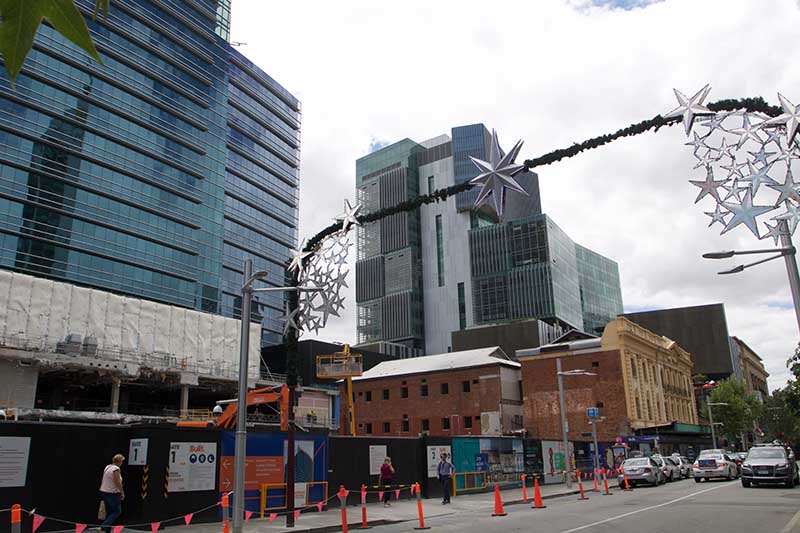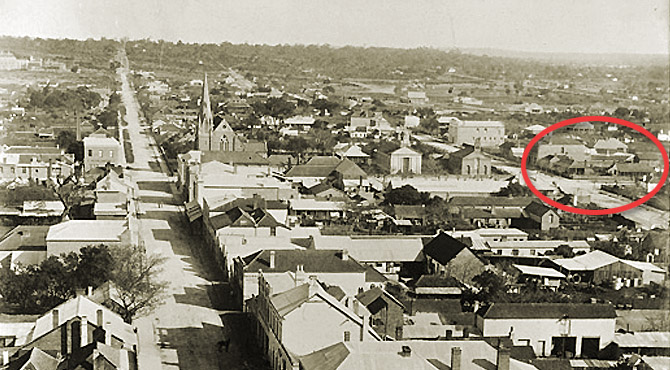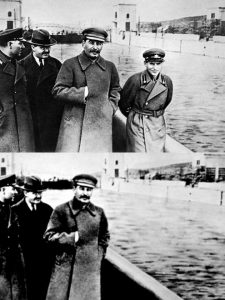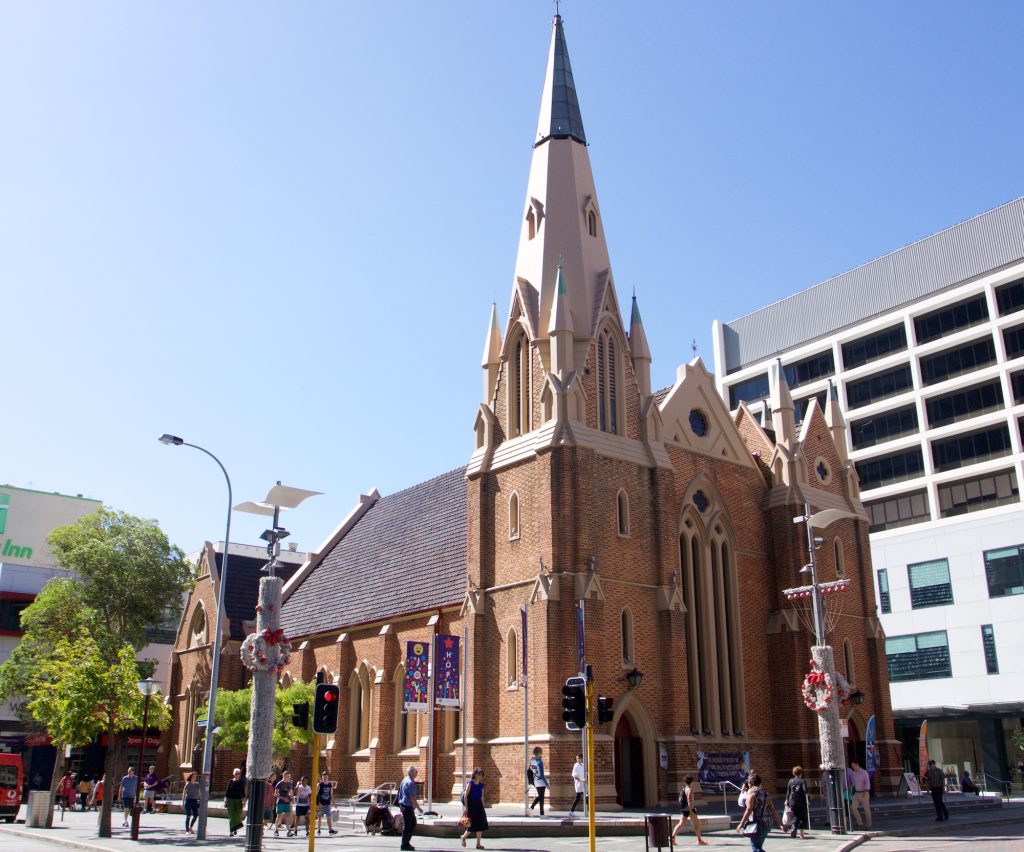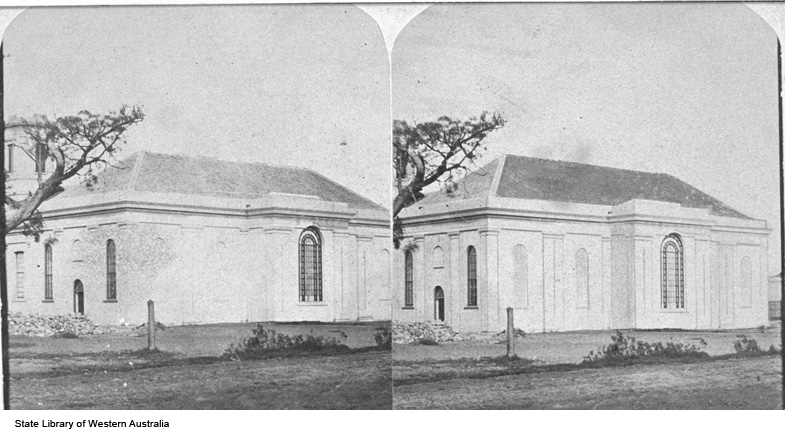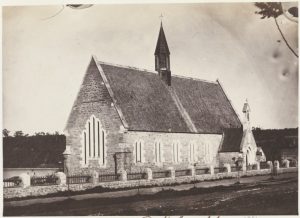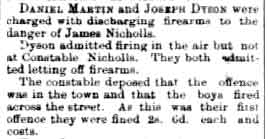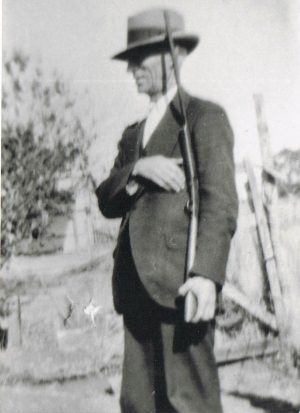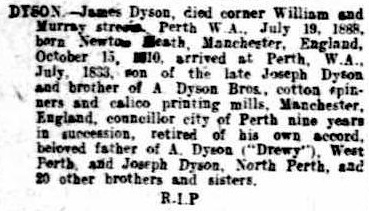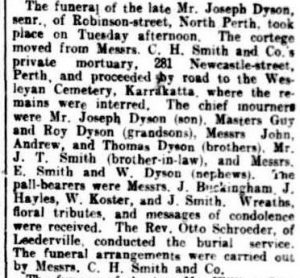or “How a bun in the oven changes everything”
It could be argued that by 1873, James Dyson, owner of a Swamp and an urban block on the corner of Murray and King Streets in the City of Perth, was at the height of his wealth and influence—He had been elected to the Perth Municipal Council back in 1867, and was an inaugural member of Perth Road Board in 1871—so it would seem that there would be no end to the local government contracts he would be able to steer his way.

But this article is not about James, but about his son, Joseph, for this was the year that Joseph stepped (ever so slightly) out of his father’s shadow and established himself as a Perth identity in his own right. Until this moment, when Joseph’s name appeared on a historical document, it was not immediately apparent whether it was in the context of his own interests or that of his father’s.
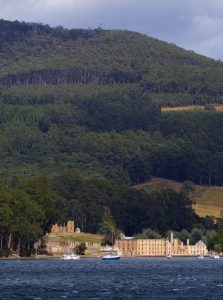
Joseph had married Mary Ann Elsegood (aged 19) daughter of former soldier William Hunt Elsegood on 2 September 1872. While I speculate that it might have been a shotgun union (literally?) between the two, I haven’t identified anything to suggest they were not a loving couple, for while their union would be tragically short, Joseph would never remarry, and there is every indication he retained a close connection with his Elsegood in-laws long after Mary’s death.
By the time of the marriage, the first Dyson’s Corner was bursting at the seams. Apart from his father, step-mother and brother, there might have anything up to ten or eleven half-siblings in residence (and a twelfth was born in May of that year). There would have been at least two or more domestic servants living with the family, and more employed by the various family businesses. According to a later anecdote, James Dyson was one of the biggest employers of labour in the colony. Many of these employees were ticket-of-leave convicts. Dyson may well have employed his in-laws as a carters for his timber business—or Elsegood’s sons— builders and carpenters, most of them — may have purchased his products. They were all hosed in close proximity to each other on Murray Street in the city.

Joseph Dyson junior was born on 17 August 1873. Maybe the Elsegood and Dyson residences both passed the point of bursting.
The second Dyson’s Corner was to be found a little way further down on Murray street, towards the city centre on the north-west corner of the intersection with William street. On the south-west side of this intersection were properties owned by the Wesleyan Methodist congregation in Western Australia. On either side of the two chapels built in 1833 and 1842 respectively, was the new Wesleyan Church that had been constructed by materials in part supplied by Joseph’s father. Immediately opposite the new Dyson compound was the Sunday School. Joseph Dyson’s connection with the Methodists was certainly a part of his life that he greatly valued—It’s hard to see how one could be a volunteer Sunday School teacher for one’s church without being so committed.
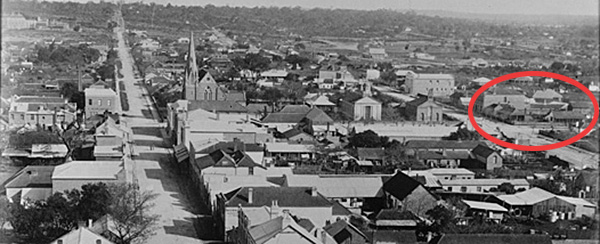
One of the harder facts to establish when researching Australian colonial history is whether a trade or profession assigned to an individual by the records refers to them actually practising that trade or them employing someone else to do it for them. This is particularly the case with those who involved themselves in public life—How on earth could they afforded the time to attend all those meetings as well as do a day’s work for themselves? To participate fully in the public life of the colony there was also a financial barrier to entry. A citizen required assets or property worth at least £150 to be eligible to serve on a jury. Both James Dyson and William Elsegood passed this watermark about the year 1860. Son Joseph’s material assets are not so clearly defined: He did not own his new residence on the corner of Murray and William Streets: It was leased from a frustratingly obscure individual named H. Williams about who I know very little. Dyson opened his new concern on the first day of the New Year, 1873.

The question remains whether Joseph did the baking himself or relied on staff. His father had employed a handful of ticket-of-leave men specifically as bakers since the mid-1860’s, the last so described was a William Maynard whom James employed in December 1874, but there were many more ticket-of-leavers employed by both James and Joseph for whom their employment occupations have not been recorded. It might also be that the “general” part of the general servants that Joseph mostly employed might have included work in the bakehouse. The names and occupations of the non-convict workforce in any of Joseph’s (and James’s) concerns have never been identified, but there is one recorded story that might relate to Joseph’s bakery (or another one on Murray street):—
Perth’s Early Bakers.
Dear “Cygnet,”—About the early bakers. There was G. Marfleet, for a start. He was at the corner of Hay- street and William-street; John Scollard, opposite the Town Hall, in Barrack-street; T. Molloy, in Murray-street; John Liddelow, in Hay-street; J. Dyson, in Murray-street; Donald Camerson, at the corner of Hay and King streets; and Denis Metheringham, in Murray-street, where the Bohemia Hotel now stands.
A little experience I had with one of the abovenamed. It would appear that this baker had had some trouble with an employee named Toby in the bake house, resulting in the baker being placed in the dough trough. I was not aware of this incident, and, whilst walking along Murray-street with a boy friend, this baker approached us on the same footpath. My boy friend said: “Do you see that boy on the opposite side of the street?” I said: “Yes.” He said: “You are not game to call out to him, ‘Toby, who fell in the dough.’ ” I very promptly called out, and the next thing I knew the baker had me in his grasp, and you can imagine what followed. For years this baker was taunted with this call by the boys of Perth.—”Groper,” Swan View.
Western Mail, Thursday 27 June 1935 p9
The other of James Dyson’s sons (the ones at least, he remained capable of providing for) had been given some training in a trade; printing and blacksmithing primarily—maybe Butchering and Baking had been Joseph’s chosen skill. He also continued his father’s business as a general dealer. After a year in business on his own account he was now described as “well known” in the City:—
One of those cases of BAREFACED THEFT which are remarkable for the audacity displayed by the perpetrators in their efforts to secure the object of their search, came under the notice of Mr. Landor, our worthy police magistrate a few days ago. One Mr. Daniel Johnson who had but recently returned from one of his periodical visits to the charming establishment presided over by Mr. H. M. Lefroy, in your town, where he had been rusticating during the summer months, was proceeding along Murray Street one day last week, admiring the architectural improvements of the metropolis when his eye—was it by chance?—fell upon a pair of elastic side boots, suspended from a nail in the shop of Mr. Dyson, the well known baker and storekeeper. “Shall I have nought to encase my pedal extremities and protect them from the wild blasts of this wintry weather?” said he; and at that moment he walked up to the door of the aforesaid baker and storekeeper, drew from his pocket a penknife, gazed cautiously round, nerved himself for the action, and with the words, do or die, on his lips, rent the cord in twain, extended his right arm, and vanished with the boots. The hawk eye of the proprietor however caught sight of him, and the police were soon on his track. When charged with the theft before the magistrate he stoutly denied the impeachment, but Mr. Dyson as stoutly asserted that he could not be mistaken in his identification of the thief, who, failing to prove an alibi, was invited to return to Mr. Lefroy’s establishment, where he will remain a guest for the next two years.
The Herald, Saturday 5 September 1874 p3
So Joseph was most certainly behind the counter of his general dealership. Professionally, he was doing all right, but in the domestic sphere there was the the agony of his young wife’s illness and the losses within her own family. Mary’s seventeen-year-old sister Elizabeth died in September 1874; Then in November died her father, aged 55. Three other siblings died in infancy or early childhood, Mary Ann was the fifth child out of thirteen.
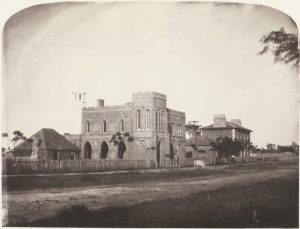
That was the situation on 4 December 1874 when Joseph saddled up a trap to take his sickly wife out to visit her recently widowed mother who was now living by the Swan River foreshore under the shadow of Mt Eliza. He was passing what is now known as the Cloisters on St George’s Terrace when his horse took fright and bolted.
The out-of-control horse and cart plunged down Mill Street, which is on a steep incline. At the end of the street was a stony open drain or culvert, and it was here that the terrified horse tripped up and the cart and its occupants tumbled out. Joseph’s arm was badly broken. The poor horse’s leg was broken and the beast had to be put down. Somehow Mary Ann escaped injury, but the truth of it was she was in the last stages of a terminal illness.
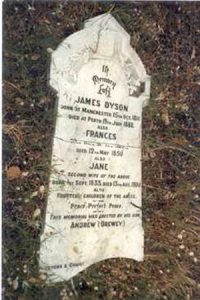
She died of tuberculosis four weeks after the accident. She was only twenty-two years old. She was buried in the newly inaugurated Wesleyan Cemetery in East Perth and she was probably the first to be interred in the existing plot that contains the remains of her husband’s father, step-mother and various other siblings. Her name is not on the surviving grave stone.
When he lost his mother, their son was only two years and four months old. The mystery remains as to which side of his family had have more influence on the upbringing of this child: Dyson or Elsegoods? Joseph Dyson junior attended school with various Dyson half-uncles and aunts, but it was the husband of an aunt on the Elsegood side: Richard Tremlett Hardman, who may have assisted Joseph getting a job in the postal service during 1894. Hardman was later the Deputy Postmaster General. It can’t have hurt his career to have such a family connection.
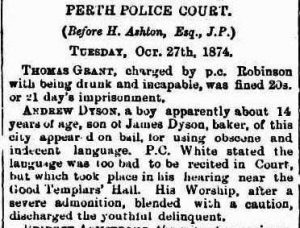
But by 1877, the negative influence of his Dyson side would have become impossible to ignore. Joseph the Elder’s father (and an indeterminate number of siblings) had moved in with them to that house on the corner of William and Murray street. His dad’s finances (and second marriage) had both collapsed. Joseph’s half-brother Drewy was gaining a reputation as one of the worst hooligans in the colony and other brothers were now presenting themselves before the city magistrates as well.
The targets for their larrikinism were often the Wesleyan Church and the Temperance Movement—both causes close to Joseph Dyson the Elder’s heart. Was their elder brother’s… pious?.. nature getting right up their noses? The original Dyson’s Corner, the old family property on the corner of King and Murray Street was sold to cover debts, it fell into the ownership of one of Joseph’s brother-in-laws: John Joseph Elsegood.
Elsegood transformed the old place into a hotel: The City Hotel, and the first Dyson’s Corner was no more. But that was not the end of the name… for the remainder of Joseph Dyson’s tenure on the corner of Murray and William street, and for many years afterwards, this location was also known as Dyson’s Corner.
